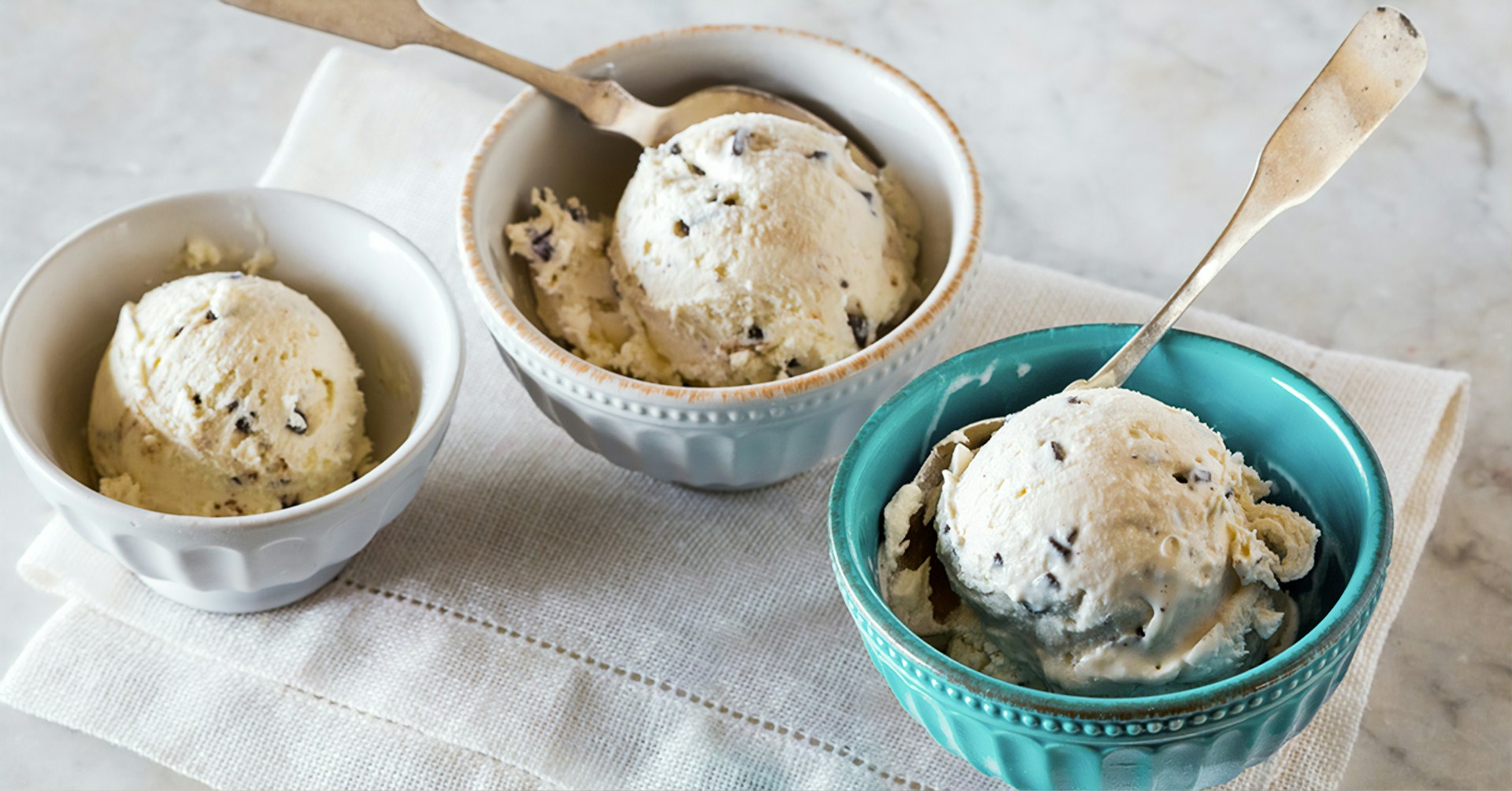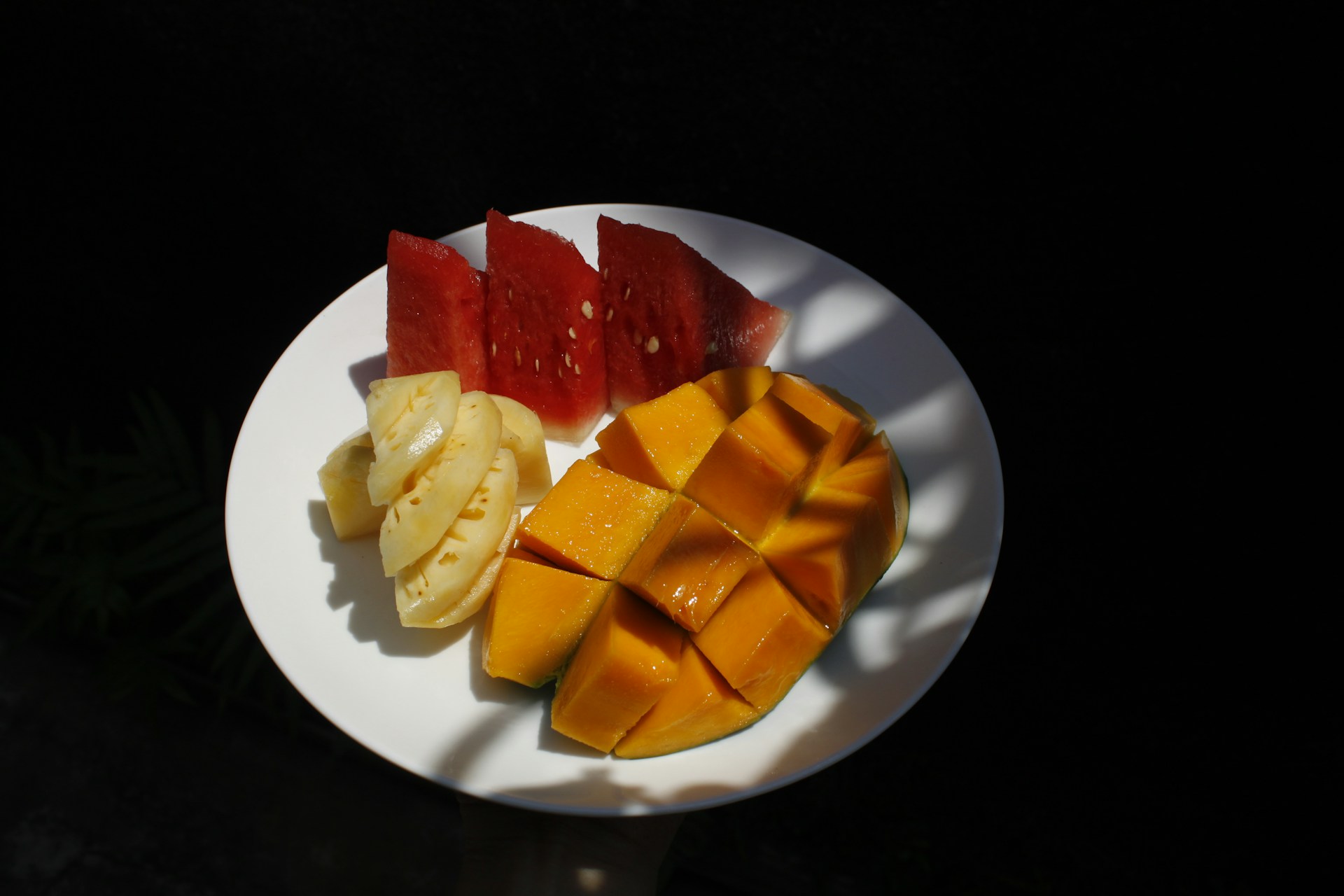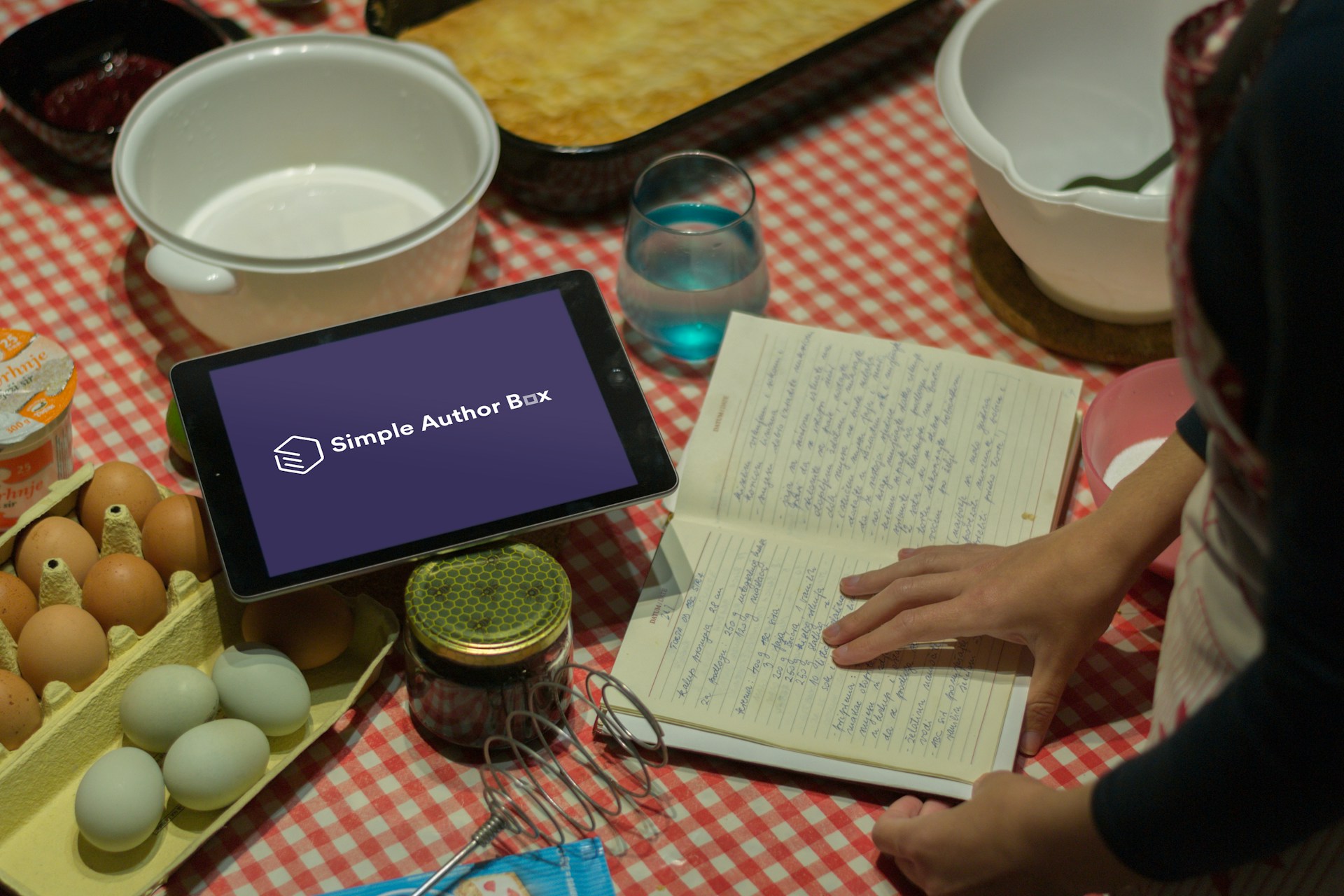The Quality of Ice Cream with Cowpea Tempeh Extract and Porang Tuber Extract Paste as Stabilizer
Es Krim Ekstrak Tempe Kacang Tunggak dan Pasta Ekstrak Umbi Porang sebagai Penstabil

Downloads
Background: Ice cream contains a high saturated fat and uses commercial stabilizers which are detrimental to health. This study uses cowpea tempeh extract containing a low saturated fat and porang tuber extract paste as natural stabilizers.
Objectives: To determinate the effect of adding cowpea tempeh extract as a substitute for water and porang tuber extract paste as a replacement for carboxymethyl cellulose (CMC) and super polymer (SP) on the ice cream characteristics.
Methods: This study used a completely randomized design with four treatments based on the ratios amount of cowpea tempeh extract and porang tuber extract paste (%), 0:0 (K), 5:1 (A), 10:1.5 (B), and 15:2 (C). This study measured the protein content, fat content, solids content, sucrose content, total plate counts, Salmonella prevalence, melting rate, overrun and panelists' preference.
Results: The result of the ice cream testing shows that the protein content is 4.35%-7.47%, the fat content 8.68%-9.84%, the total solids content 23.53%-30.75%, the sugar content (sucrose) 20.67%-20.87%, the overrun 70.67%-100%, the melting rate 1019 seconds-1207 seconds, and the compliance with Indonesia National Standard dealing with the total plate counts and the Salmonella prevalence.
Conclusions: The best ice cream is obtained in the treatment C (15%:2%).
Hasanuddin, K. H., Dewi & Fitri. Pengaruh proses pembuatan es krim terhadap mutu es krim. Jurnal Agroindustri 1, 1–7 (2011). http://doi.org/10.31186/j.agroind.1.1.1-7
Marantha, H. A. & Rustanti, N. Kandungan gizi, sifat fisik, dan tingkat penerimaan es krim kacang hijau dengan penambahan spirulina. Journal of Nutrition College 3, 755–761 (2014). https://doi.org/10.14710/jnc.v3i4.6877
Trivana, L. & Wungkana, J. Studi komparasi atribut sensoris dan kesadaran merek produk pangan. Jurnal Pangan dan Agroindustri 5, 66–73 (2019).
Saputro, D. H., Andriani, M. A. & Siswanti. Karakteristik sifat fisik dan kimia formulasi tepung kecambah kacang – kacangan sebagai bahan minuman fungsional. Jurnal Teknosains Pangan 4, 10–19 (2015).
Guasch-Ferré, M. et al. Nut Consumption and Risk of Cardiovascular Disease. J Am Coll Cardiol 70, 2519–2532 (2017). http://doi.org/10.1016/j.jacc.2017.09.035
Ismayanti, M. & Harijono. Formulasi mpasi berbasis tepung kecambah kacang tunggak dan tepung jagung dengan metode linear programming. Jurnal Pangan dan Agroindustri 3, 996–1005 (2015).
Zia-Ul-Haq, M., Ahmad, S., Chiavaro, E. & Ahmed, S. Studies of oil from cowpea (Vigna unguiculata) (L.) Walp.) cultivars commonly grown in Pakistan. Pakistan Journal of Botany 42, 1333–1341 (2010).
Devisetti, R. & Prakash, J. Comparative assessment of organic and non-organic – chickpea and cowpea, nutritional composition and antinutrients upon germination. World Journal of Advanced Research and Reviews 8, 262–270 (2020). http://doi.org/10.30574/wjarr.2020.8.2.0432
Ratnaningsih, N., Nugraheni, M. & Rahmawati, F. Pengaruh jenis kacang tunggak, proses pembuatan dan jenis inoculum terhadap perubahan zat – zat gizi pada fermentasi tempe kacang tunggak. Jurnal Penelitian Saintek 14, 97–128 (2009).
Susianto & Ramayulis, R. Fakta Ajaib Khasiat Tempe. (Penebar Swadaya, 2013).
Bahramparvar, M. & Tehrani, M. M. Application and functions of stabilizers in ice cream. Food Reviews International 27, 389–407 (2011). http://doi.org/10.1080/87559129.2011.563399
Guna, F. P. D., Bintoro, V. P. & Hintono, A. Pengaruh Penambahan Tepung Porang sebagai Penstabil terhadap Daya Oles, Kadar Air, Tekstur, dan Viskositas Cream Cheese. Jurnal Teknologi Pangan 4, 88–92 (2020). https://doi.org/10.14710/jtp.2020.26740
Chassaing, B. et al. Randomized Controlled-Feeding Study of Dietary Emulsifier Carboxymethylcellulose Reveals Detrimental Impacts on the Gut Microbiota and Metabolome. Gastroenterology 162, 743–756 (2022). http://doi.org/10.1053/j.gastro.2021.11.006
Aryanti, N. & Abidin, Y Ekstraksi glukomanan dari porang local (Amorphophallus oncophyllus dan Amorphophallus muerelli blume). METANA 11, 21–30 (2015).
Balai Penelitian Tanaman Aneka Kacang dan Umbi. Memperkuat Posisi Porang di Indonesia Bersama Bappenas. https://balitkabi.litbang.pertanian.go.id/berita/memperkuat-posisi-porang-di-indonesia-bersama-bappenas/ (2021).
Ayu Wulansari, M., Rahayu Lestari, S. & Gofur, A. Ekstrak Tempe Kedelai Hitam dan Ubi Jalar Ungu Terhadap Toleransi Darah Tikus Model DMT2. Biogenesis: Jurnal Ilmiah Biologi 6, 28–35 (2018). http://doi.org/10.24252/bio.v6i1.4236
Putri Mambang, D. E., -, R. & Suryanto, D. Aktivitas antibakteri ekstrak tempe terhadap bakteri Bacillus subtilis DAN Staphylococcus aureus. Jurnal Teknologi dan Industri Pangan 25, 115–118 (2014). http://doi.org/10.6066/jtip.2014.25.1.115
Zahro, C. & Nisa, F. C. Pengaruh penambahan sari anggur (Vitis vinifera L.) dan penstabil terhadap karakteristik fisik, kimia dan organoleptic es krim.. Jurnal Pangan dan Agroindustri 3, 1481–1491 (2015).
Rosaini, H., Rasyid, R. & Hagramida, V. Penetapan kadar protein secara kjeldahl beberapa makanan olahan kerrang remis (Corbiculla moltkiana Prime.) dari Danau Singkarak. Jurnal Farmasi Higea 7, 120–127 (2015). http://doi.org/10.52689/higea.v7i2.123
Achmad, F., Nurwantoro & Mulyani, S. Daya kembang, total padatan, waktu pelelehan, dan kesukaan es krim fermentasi menggunakan starter Saccharomyces cereviceae. Animal Agriculture Journal 1, 65–76 (2012).
Setiawati, E., Bahri, S. & Razak, A. R. Ekstraksi glukomanan dair umbi porang (Amorphophallus paeniifolius (Dennst.) Nicolson)Ekstraksi glukomanan dari umbi porang (Amorphophallus paeniifolius (Dennst.) Nicolson). Kovalen 3, 234–241 (2017). http://doi.org/10.22487/j24775398.2017.v3.i3.9332
Dewi, E., Yerizam, M. & Ningsih, A. W. Pembuatan biskuit dari pasta ubi ungu (pasta diproses menggunakan rotary evaporator). Jurnal Kinetika 11, 14–19 (2020).
Widjanarko, S. B. & Megawati, J. Analisis metode kolorimetri dan gravimetric pengukuran kadar glukomanan pada konjak (Amorphophallus konjac). Jurnal Pangan dan Agroindustri 3, 1584–1588 (2015).
Mailoa, M., Rodiyah, S. & Palijama, S. Pengaruh konsentrasi carboxymethyl cellulose terhadap kualitas es krim ubi jalar (Ipomea batatas L.). AGRITEKNO, Jurnal Teknologi Pertanian 6, 45–51 (2017). https://doi.org/10.30598/jagritekno.2017.6.2.45
Iman, Nurhasanah & Sampurno, J. Analisis Fraktal Untuk Identifikasi Kadar Gula Rambutan dengan Metode Box-Counting. Prisma Fisika 6, 57–60 (2018). http://doi.org/10.26418/pf.v6i2.23912
Atma, Y. Angka lempeng total (ALT), angka paling mungkin (APM) dan total kapang khamir sebagai metode analysis sederhana untuk menentukan standar mikrobiologi pangan olahan posdaya. J Teknol 8, 77–82 (2016). https://doi.org/10.24853/jurtek.8.2.77-83
Ubaidillah. Deteksi cemaran Salmonella spp. pada udang putih yang dijual di pasar tradisional. Jurnal Farmasetis 9, 81–88 (2020). https://doi.org/10.32583/farmasetis.v9i1.882
Khanifah, F.Analisis kadar protein total pada tempe fermentasi dengan penambahan ekstrak nanas (Ananascomosus (L.) Merr). Jurnal Nutrisia 20, 34–37 (2018). http://doi.org/10.29238/jnutri.v20i1.113
Badan Standarisasi Nasional. SNI 01-3830-1995 Tentang Syarat Mutu Susu Kedelai. (1995).
Amelia, J. R., Azni, I. N., Basriman, I. & Pasasti, F. N. W. Karakteristik Kimia Minuman Sari Tempe-Jahe Dengan Penambahan Carboxy Methyl Cellulose dan Gom Arab pada Konsentrasi Yang Berbeda. Chimica et Natura Acta 9, 36–44 (2021). https://doi.org/10.24198/cna.v9.n1.33038
Hendrianto, E. & Rukmi, W. D. Pengaruh penambahan beras kencur pada es krim sari tempe terhadap kualitas fisik dan kimia . Jurnal Pangan dan Agroindustri 3, 353–361 (2015).
Alristina, A. D., Ethasari, R. K., Laili, R. D. & Hayudanti, D. Ilmu Gizi Dasar. (Sarnu Untung, 20021).
Yusuf, I. A. E., Setyawardani, T. & Santosa, R. S. S. Total padatan dan warna kefir susu kambing dengan penambahan ekstrak daun kelor (Moringa oleifera L.) dengan persentase yang berbeda. J Anim Sci Technol 2, 99–104 (2020).
Herawati, H. Potensi hidrokoloid sebagai bahan tambahan pada produk pangan dan nonpangan bermutu. Jurnal Penelitian dan Pengembangan Pertanian 37, 17 (2018). http://doi.org/10.21082/jp3.v37n1.2018.p17-25
Liu, Y. et al. The influence of konjac glucomannan on the physicochemical and rheological properties and microstructure of canna starch. Foods 10, 1–12 (2021). http://doi.org/10.3390/foods10020422
Goff, H. D. & Hartel, R. W. Ice Cream. (Springer, 2013).
Astuti, I. M. & Rustanti, N. Kadar protein, gula total, total padatan, viskositas dan nilai pH es krim yang disubstitusi inulin umbi gembili. Journal of Nutrition College 3, 331–336 (2014). http://doi.org/10.14710/jnc.v3i3.6584
Badan Standarisasi Nasional. SNI 01-3713-1995 Tentang Syarat Mutu Es Krim. (1995).
Widiantoko, R. K. & Yunianta. Pembuatan es krim tempe jahe (kajian proporsi bahan dan penstabil terhadap sifat fisik, kimia dan organoleptik). Jurnal Pangan dan Agroindustri 2, 54–66 (2014).
Izwardy, D. et al. Tabel Komposisi Pangan Indonesia 2017. (Kementrian Kesehatan Republik Indonesia, 2018).
Widjanarko, S. B., Sutrisno, A. & Faridah, A. Efek hidrogen peroksida terhadap sifat fisiko-kimia tepung porang (Amorphophallus oncophyllus) dengan metode maserasi dan ultrasonik. Jurnal Teknologi Pertanian 12, 143–152 (2011).
Mulyani, D. R., Dewi, E. N. & Kurniasih, R. A. Karakteristik es krim dengan penambahan alginate sebagai penstabil. Jurnal Pengolahan & Bioteknologi Hasil Perikanan 6, 36–42 (2017).
Rai Widarta, I. W., Rukmini, A., Santoso, U., Supriyadi & Raharjo, S. Optimization of oil-in-water emulsion capacity and stability of octenyl succinic anhydride-modified porang glucomannan (Amorphophallus muelleri Blume). Heliyon 8, e09523 (2022). https://doi.org/10.1016/j.heliyon.2022.e09523
Razi, S. M., Motamedzadegan, A., Shahidi, S. A. & Rashidinejad, A. Physical and Rheological Properties of Egg Albumin Foams Are Affected by Ionic Strength and Basil Seed Gum Supplementation. International Journal of Chemical Engineering 2019, (2019). http://doi.org/10.1155/2019/2502908
Dachmann, E., Hengst, C., Ozcelik, M., Kulozik, U. & Dombrowski, J. Impact of Hydrocolloids and Homogenization Treatment on the Foaming Properties of Raspberry Fruit Puree. Food Bioproc Tech 11, 2253–2264 (2018). http://doi.org/10.1007/s11947-018-2179-1
Abo-Srea, M. M., Emara, E. A. & El-Sawah, T. H. Impact of konjac glucomannan on ice cream-like properties. International Journal Dairy Science 12, 177–183 (2017). http://doi.org/10.3923/ijds.2017.177.183
Rahimah, S., Fadhila, A., Lembong, E., Sukri, N. & Cahyanto, T. Characteristics of Spanish Mackerel (Scomberomorus commerson) Bone Gelatin for Ice Cream Stabilizer. Indonesian Journal of Halal Research 2, 1–7 (2020). http://doi.org/10.15575/ijhar.v2i1.7820
Sembiring, C. I., Legowo, A. M. & Hintono, A. Pengaruh penambahan tepung umbi porang (Morphophallus oncophyllus) sebagai penstabil terhadap sifat fisik, kimia, dan organoleptic es krim nangka. Jurnal Teknologi Pangan 3, 241–246 (2019). https://doi.org/10.14710/jtp.2019.23870
Puspandari, N. & Isnawati, A. Deskripsi Hasil Uji Angka Lempeng Total (ALT) Pada Beberapa Susu Formula Bayi. Jurnal Kefarmasian Indonesia 5, 106–112 (2015). http://doi.org/10.22435/jki.v5i2.4405.106-112
Suwito, W., Andriani & Kristiyanti, F. Identifikasi E. coli O157:H7, Salmonella sp, dan sensitifitas antibiotika dari susu kambing dan produk olahannya. Jurnal Penelitian Pascapanen Pertanian 15, 36–42 (2018). http://doi.org/10.21082/jpasca.v15n1.2018.36-42
Mendonca, A., Thomas-Popo, E. & Gordon, A. Microbiological considerations in food safety and quality systems implementation. in Food Safety and Quality Systems in Developing Countries: Volume III: Technical and Market Considerations 185–260 (Elsevier, 2020). https://doi.org/10.1016/B978-0-12-814272-1.00005-X
Banjoko, I. O. et al. Hypolipidemic effects of lactic acid bacteria fermented cereal in rats. Lipids Health Dis 11, (2012). http://doi.org/10.1186/1476-511X-11-170
Jannah, Y. R. Penambahan tepung porang (Amorphophallus oncophillus pada es krim yogurt ditinjau dari total plate count. Brawijaya Knowledge Garden, (2013).
Ratnasari, D. A. P. & Lagiono. Studi kandungan bakteri Salmonella sp pada es krim (es puter) yang dijual di wilayah kota kabupaten purbalingga tahun 2016. Jurnal Buletin Kesehatan Lingkungan Masyarakat 36, 138–142 (2017). http://doi.org/10.31983/keslingmas.v36i2.2978
Suryono, C., Ningrum, L. & Dewi, T. R. Uji Kesukaan dan Organoleptik Terhadap 5 kemasan dan Produk Kepulauan Seribu Secara Deskriptif. Jurnal Pariwisata 5, 95–106 (2018). http://doi.org/10.31311/par.v5i2.3526
Tarwendah, I. P. Comparative Study of Sensory Attributes and Brand Awareness in Food Product : A Review. Jurnal Pangan dan Agroindustri 5, 66–73 (2017).
Hidayah, N. L. & Anna, C. Pengaruh substitusi tepung tempe dan penambahan margarin terhadap mutu organoleptik kue kembang goyang. E-Jurnal Tata Boga 8, 23–31 (2019).
Suknia, S. L. & Rahmani, T. P. D. Proses pembuatan tempe home industry berbahan dasar kedelai (Glycine max (L.) Merr) dan kacang merah (Phaseolus vulgaris L.) di Candiwesi, Salatiga. Southeast Asian Journal of Islamic Education Southeast Asian Journal of Islamic Education 3, 59–76 (2020). http://doi.org/10.21093/sajie.v3i1.2780
Wambogo, E.A., Ansai, N., Terry, A., Fryar, C. & Ogden, C. Dairy, Meat, Seafood, and Plant Sources of Saturated Fat: United States, Ages Two Years and Over, 2017-2020, J Nutr. 153(9), 2689-2698 (2023). doi https://doi.org/10.1016/j.tjnut.2023.06.040.
Copyright (c) 2024 Amerta Nutrition

This work is licensed under a Creative Commons Attribution-ShareAlike 4.0 International License.
AMERTA NUTR by Unair is licensed under a Creative Commons Attribution-ShareAlike 4.0 International License.
1. The journal allows the author to hold the copyright of the article without restrictions.
2. The journal allows the author(s) to retain publishing rights without restrictions
3. The legal formal aspect of journal publication accessibility refers to Creative Commons Attribution Share-Alike (CC BY-SA).
4. The Creative Commons Attribution Share-Alike (CC BY-SA) license allows re-distribution and re-use of a licensed work on the conditions that the creator is appropriately credited and that any derivative work is made available under "the same, similar or a compatible license”. Other than the conditions mentioned above, the editorial board is not responsible for copyright violation.












































